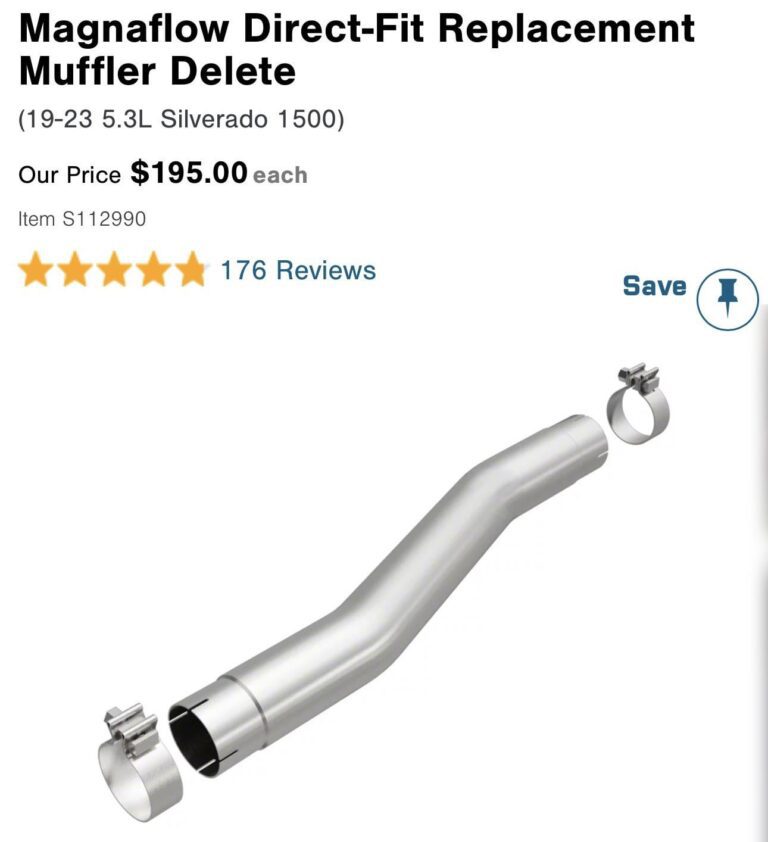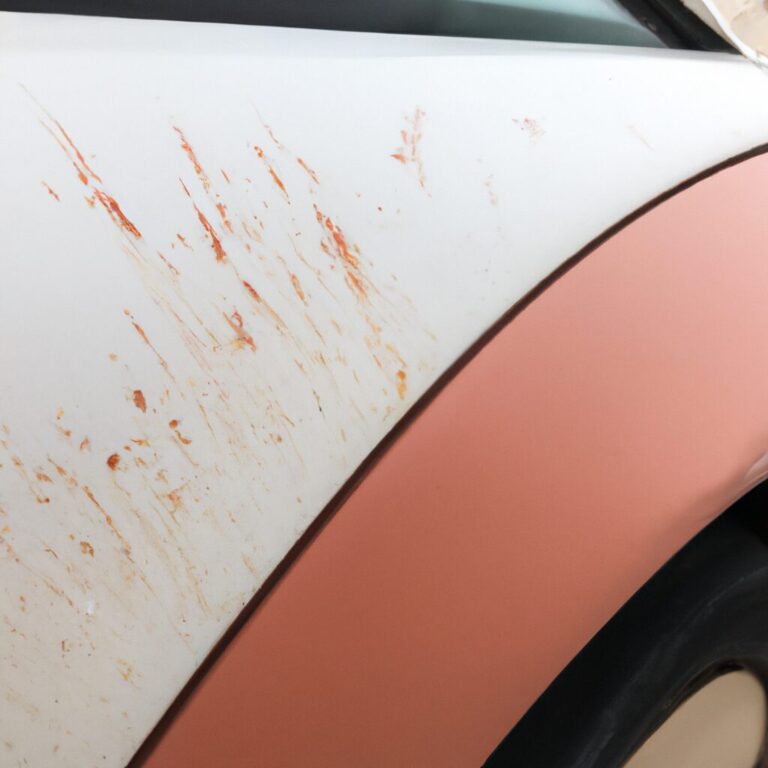Diy Guide: Easy Steps for Wiper Blade Replacement
Replacing wiper blades is simple. Follow this DIY guide for easy steps.
Are your wipers streaking or producing chatter sounds? It’s time to replace them! Worn-out wiper blades can reduce visibility and compromise driving safety. Luckily, replacing wiper blades is a quick and straightforward task that you can do yourself. By following a few easy steps, you can ensure that your car’s windshield wipers are functioning effectively, keeping your view clear in all weather conditions.
In this guide, we’ll walk you through the process of wiper blade replacement, providing you with a hassle-free solution to this common car maintenance task.

Credit: www.amazon.com
Choosing The Right Wiper Blades
Looking for guidance on choosing the right wiper blades? Check out this DIY guide for easy steps to replace wiper blades. With simple instructions and clear visuals, you can swiftly tackle the task and ensure optimal visibility on the road.
When it comes to maintaining the functionality of your car, replacing your wiper blades regularly is essential. But how do you choose the right wiper blades for your vehicle? In this section, we will discuss two important factors to consider when selecting wiper blades: size and fit, and the different types available in the market.Considering Size And Fit
Size matters when it comes to wiper blades. Using the correct size ensures that the blades cover the entire windshield effectively, providing clear visibility during rain or snow. To determine the right size, you can refer to your vehicle’s owner’s manual or measure the blades yourself. Use a measuring tape to measure the length of both wiper blades from end to end. Remember to measure both the driver’s side and passenger’s side separately, as they may have different sizes. Finding the perfect fit is equally important. Different vehicles have different attachment systems for their wiper blades. The most common types include hook, pin, and bayonet attachments. Ensure that the wiper blades you choose are compatible with your vehicle’s attachment system. You can usually find this information in the product description or consult your vehicle’s manual. Here’s a summary:| Attachment Type | |
|---|---|
| Hook | Most common attachment type, with a J-shaped hook that slides over a special arm. |
| Pin | Features a small pin that needs to be pushed or pulled to secure the blade. |
| Bayonet | Involves a locking mechanism with a button that needs to be pressed to release or attach the wiper blade. |
Understanding Different Types Of Wiper Blades
Now that you have the correct size and fit in mind, let’s explore the various types of wiper blades available:- Conventional Wiper Blades: These are the traditional, cost-effective wiper blades with a rubber blade attached to a metal frame. While they get the job done, they may not provide the same performance as newer options.
- Beam Wiper Blades: Also known as flat blades, these are made without a metal frame. Instead, they use a single piece of rubber or silicone linked with a spring steel beam. Beam blades offer improved aerodynamics and are more resistant to wind lift.
- Hybrid Wiper Blades: As the name suggests, hybrid blades combine the best features of conventional and beam wiper blades. They have a conventional frame structure with a sleek, aerodynamic design like beam blades, providing better performance in various weather conditions.
- Winter Wiper Blades: Designed specifically for cold weather conditions, these blades have a durable rubber cover to prevent ice and snow buildup. They are more flexible and work efficiently in freezing temperatures.
Gathering Necessary Tools And Materials
Gathering the necessary tools and materials is the first step in replacing wiper blades yourself. Making sure you have the right items on hand will help streamline the process.
Tools Required
- Screwdriver: for removing old wiper blades.
- Pliers: for gripping and pulling components.
- Towel: to clean surfaces and hands.
Required Replacement Parts
- New Wiper Blades: ensure they are the correct size for your car.
- New Wiper Arm: if necessary for replacement.
- Necessary Fasteners: to secure the new blades.
Removing The Old Wiper Blades
When replacing your wiper blades, the first step is removing the old ones. This process involves two main steps: lifting the wiper arm and releasing the old blade.
Lifting The Wiper Arm
Follow these steps to lift the wiper arm:
- Position yourself by the wiper blade.
- Gently lift the wiper arm away from the windshield.
Releasing The Old Blade
Now it’s time to release the old blade. Here’s how:
- Locate the release tab on the wiper arm.
- Press the tab to unhinge the old blade from the wiper arm.
- Slide the old blade out of the wiper arm slot.

Credit: www.toyotaofseattle.com
Installing The New Wiper Blades
When it comes to wiper blade replacement, installing the new blades is a straightforward process that you can easily do yourself. In this DIY guide, we will walk you through the easy steps of installing new wiper blades on your vehicle. Ready to improve your visibility in rainy weather? Let’s get started!
Attaching New Blade
Attaching the new wiper blade to the wiper arm is the first step in the replacement process. Follow these simple steps:
- Start by lifting the wiper arm away from the windshield to access the old wiper blade.
- Locate the release tab on the wiper blade, usually located towards the connector end.
- Depress the release tab and carefully slide the old wiper blade off the connector. Be cautious to avoid damaging the windshield or scratching the paint.
- Now, take the new wiper blade and ensure it is the correct size and style for your vehicle. Refer to your vehicle’s manual or consult with a professional if needed.
- Align the connector of the new wiper blade with the wiper arm, making sure the hook on the arm fits securely onto the connector.
- Once aligned, push the new wiper blade onto the connector until you hear a clicking sound, indicating that it is securely attached.
Securing The Wiper Arm
Once you have attached the new wiper blade, the next step is to secure the wiper arm back into its original position. Follow these steps:
- Gently lower the wiper arm back onto the windshield, ensuring that the wiper blade is in contact with the glass.
- Ensure that the wiper blade sits flush against the windshield and that the arm is in the correct position to provide optimal coverage.
- Press down on the wiper arm to ensure that it is secured in place.
- Gently test the new wiper blade by turning on your vehicle’s wiper system and checking for proper movement and functionality.
Testing The New Wiper Blades
Testing the new wiper blades is an essential part of the replacement process. Ensuring that the wiper blades function properly is crucial for maintaining clear visibility during inclement weather conditions. Additionally, proper testing and potential adjustments contribute to the overall safety of the vehicle and its occupants.
Testing For Proper Operation
Upon installing the new wiper blades, it’s vital to test their operation before relying on them during adverse weather. To do this:
- Activate the wiper blades using the vehicle’s control panel.
- Observe the movement of the blades to ensure they effectively clear the windshield.
- Check for any streaking or skipping across the windshield surface.
- Look for proper contact and pressure of the blades against the windshield.
Making Adjustments If Necessary
If the wiper blades do not perform optimally during testing, adjustments may be required. This can include:
- Inspecting for proper installation of the blades on the wiper arm.
- Ensuring the blades are securely and correctly attached.
- Checking for any obstructions that may be affecting the movement of the blades.
- Examining the condition of the windshield for any irregularities that could impact performance.
- Considering the replacement of the wiper arm if it’s causing issues with the new blades.

Credit: www.sunrisechevrolet.com
Frequently Asked Questions For Diy Guide: Easy Steps For Wiper Blade Replacement
How Do You Change Windshield Wipers Step By Step?
To change windshield wipers, follow these steps: 1. Lift the wiper arm away from the windshield. 2. Locate the release tab and press it. 3. Pull the old wiper blade off the arm. 4. Attach the new wiper blade. 5.
Lower the arm back onto the windshield. It’s a simple process that ensures clear visibility.
How Do You Put The Blade Back On A Windshield Wiper?
To put the blade back on a windshield wiper, align the blade with the arm, slide it on until it clicks securely in place.
Can I Change Windshield Wipers By Myself?
Yes, you can change windshield wipers yourself. It’s a simple task that requires no special tools.
How Do You Change A Wiper Blade Arm?
To change a wiper blade arm, follow these steps: 1. Lift the wiper arm away from the windshield. 2. Locate the small tab on the wiper arm and press it to release the old blade. 3. Slide the old blade off the arm.
4. Slide the new wiper blade onto the arm until it clicks into place. 5. Lower the wiper arm back onto the windshield.
Conclusion
Replacing your wiper blades is a simple task that can greatly improve your visibility while driving in rainy or snowy conditions. By following the easy steps outlined in this DIY guide, you can save money on professional installation and ensure your wiper blades are functioning at their best.
Don’t let a worn-out wiper blade compromise your safety on the road. Take care of this maintenance task yourself and drive with confidence in any weather.


